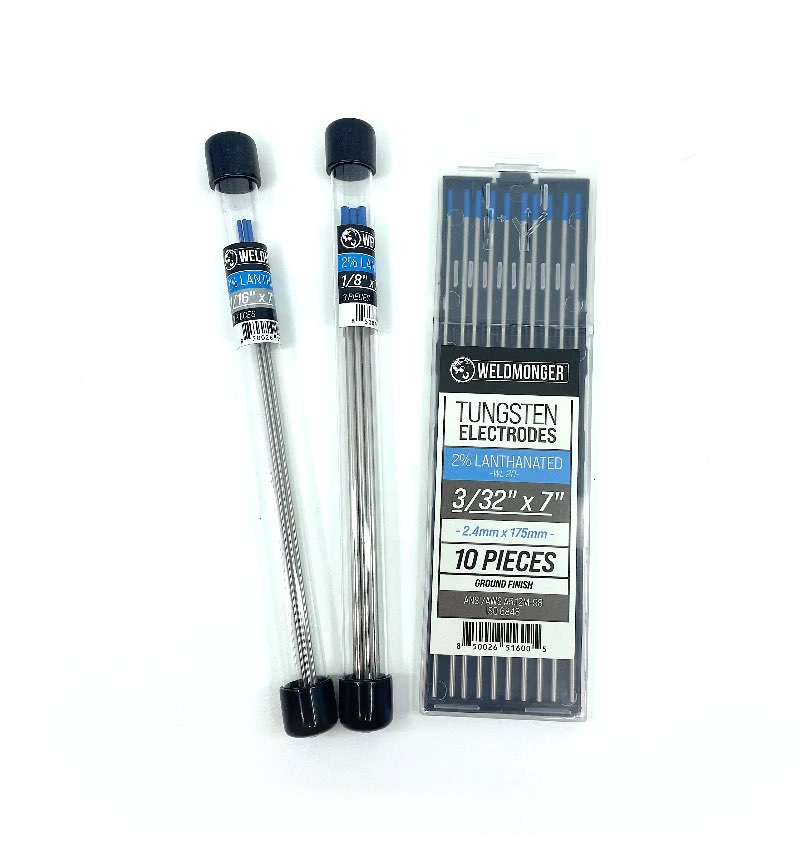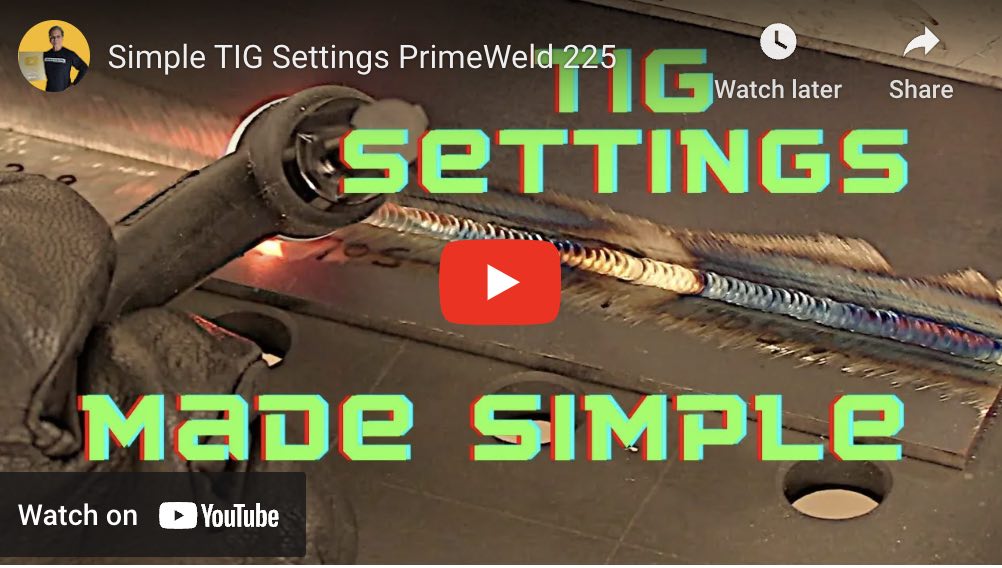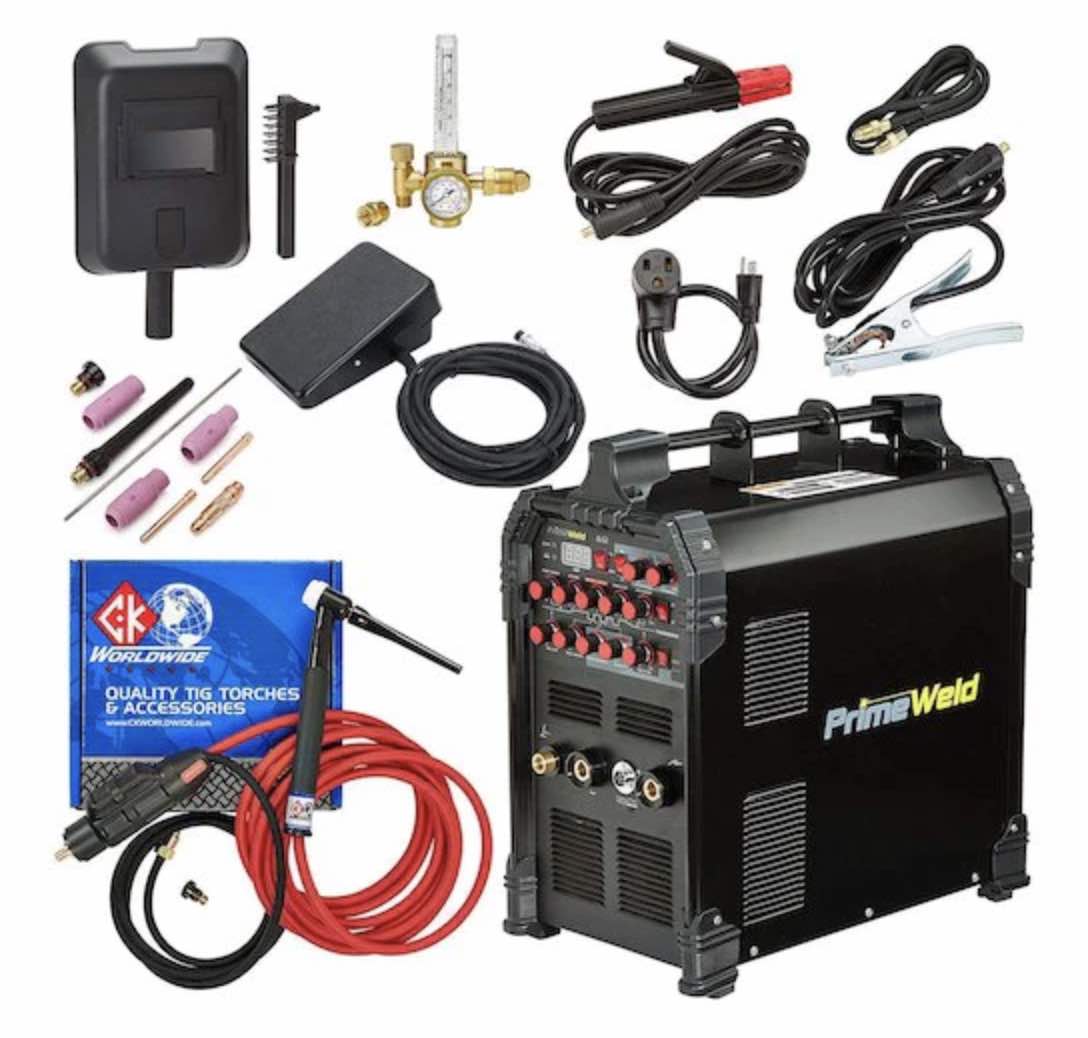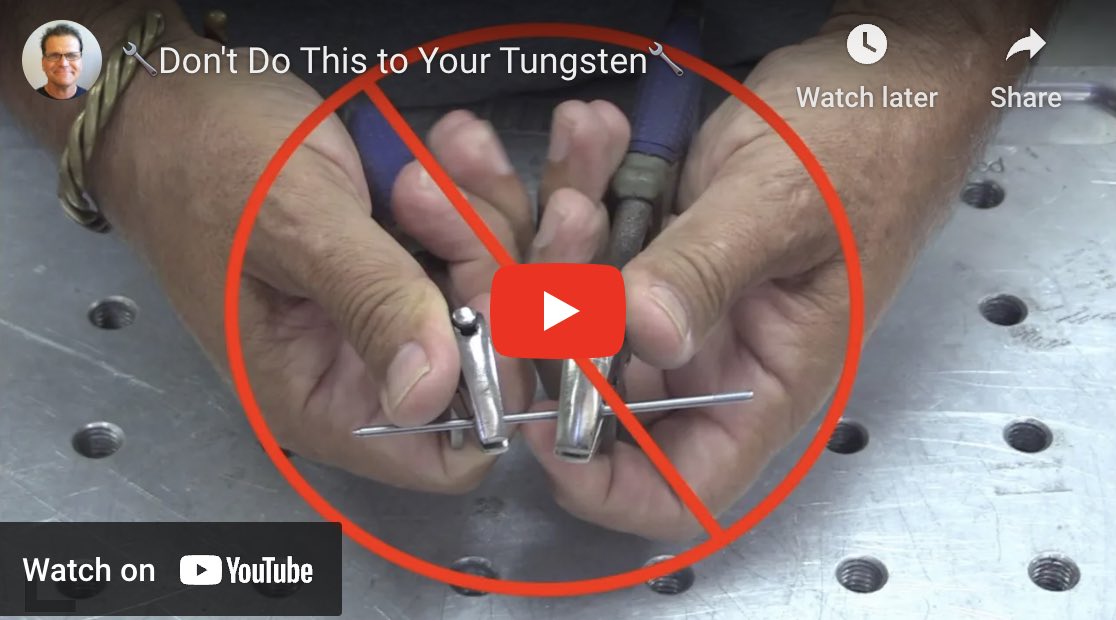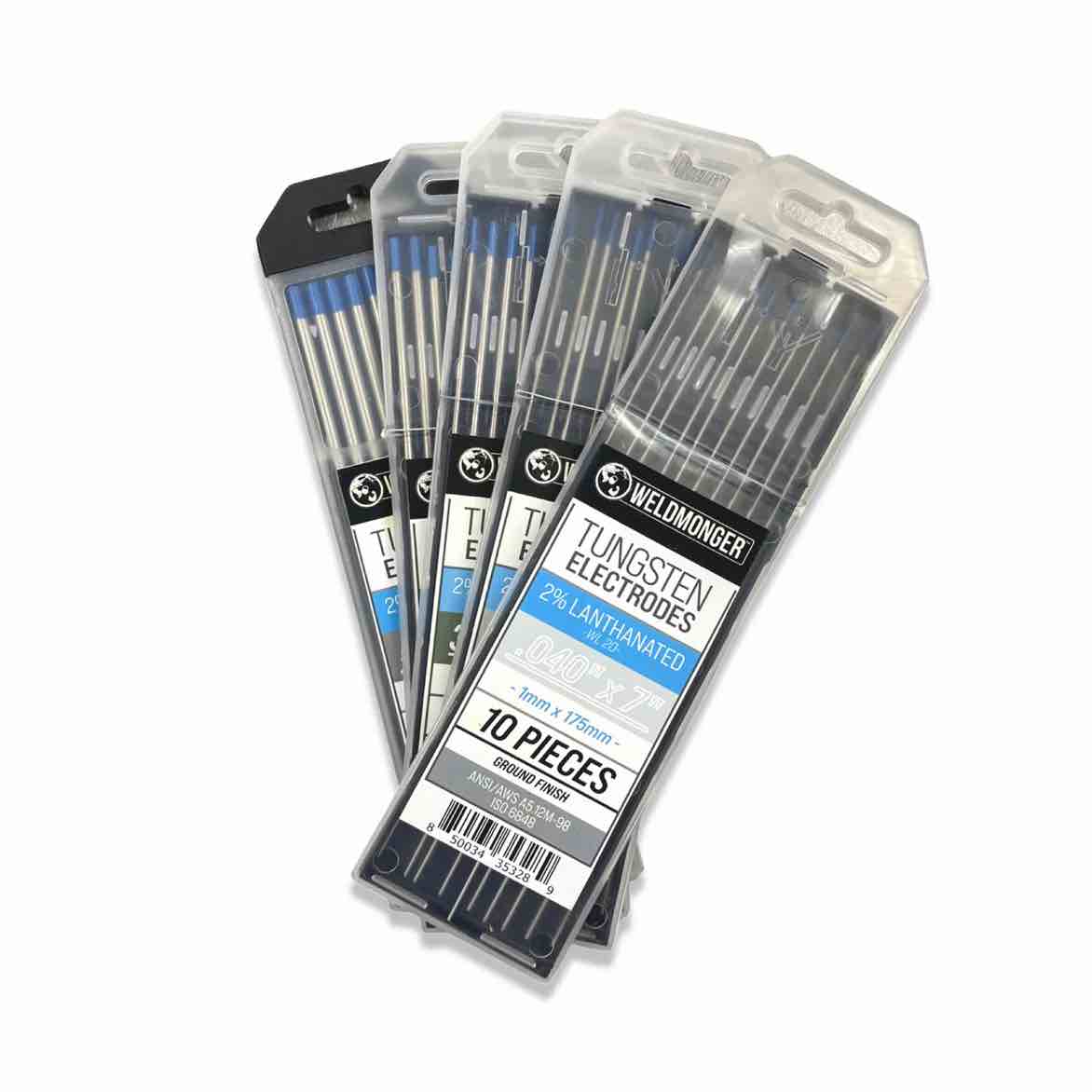Tungsten Size Chart with more Realistic Maximum Amperage
Great prices on quality tungsten at Weldmonger.com
When you weld near the maximum amperage range for any size tungsten electrode, the arc changes and you risk dumping tungsten in your puddle.
There are quite a few tungsten size charts online that list amperage ranges for each diameter of tungsten electrode but the problem for me is the maximum amperage listed is usually too high or at least on the ragged edge of being too high.
And what happens when you exceed that maximum amperage?
Nothing good.
The most likely thing to happen is you dump tungsten inclusions in your weld.
Is it worth it to push the maximum limits or would it be better to use a larger diameter tungsten?
To me, it is akin to racing your motor past the red line on the tachometer.
You might get away with it here and there, but eventually, bad things happen.
When you are welding on the ragged edge, any bobble like a sputter or accidentally touching your filler wire can blow things up.
I saw a Miller Electric tungsten chart that listed the maximum amperage of 1/16” electrodes (seriated, lanthanated, and thoriated )
At 150 amps.
Let that sink in. 150 amps with a 1/16” tungsten electrode.
My experience tells me that’s just way too hot for that small of a tungsten.
Whenever I get above 100 amps, I notice some sputtering and tip erosion.
That is why I don’t use 1/16” tungsten much.
1/16” is great if you find yourself welding at low amperage a lot.
But for normal job shop type work a 3/32” tungsten has a much wider range.
So I made this down and dirty chart that is more reasonable on maximum amperage ranges for tungsten.
Its just a guideline so don’t feel locked in.
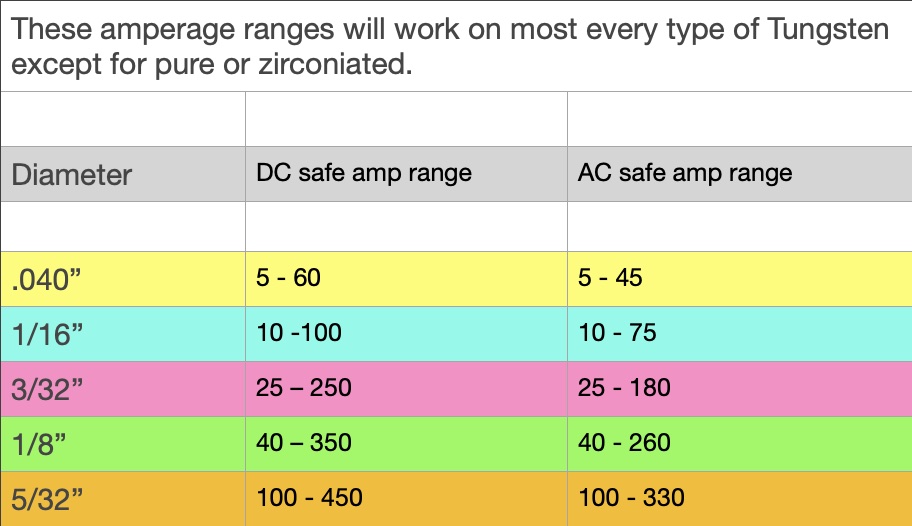
Of course, AC balance settings have a big effect on maximum amperage for each diameter of tungsten and the type of tungsten also matters.
AC balance settings video
In my opinion, the primeweld 225 is one of the best choices in affordable tig welders.
The problem with most other really affordable tig welders is usually the foot pedal and the torch are just bad and clunky.
Primeweld went to extra expense to include genuine ck torches with superflex hoses along with a smooth SSC style foot pedal.
They also have a responsive primeweld equipment users group on facebook and also have demonstrated great customer support
Watch some primeweld videos and you will see what I mean.
How to cut and sharpen tungsten electrodes
Cutting and sharpening tungsten electrodes is crucial for welding. Here are some quick tips in simple terms:
1. **Cutting Tungsten Electrodes:**
- Don't break without scoring first with a grinder or diamond wheel
- Always wear safety glasses and protect your breathing zone from tungsten dust.
2. **Sharpening Tungsten Electrodes:**
there is a place for a dedicated tungsten grinder and the folks I know who use them are glad they purchased one. But you dont need one to get started tig welding.
there are a number of ways to cut and sharpen electrodes and here are the basic tips.
- Use a dedicated tungsten sharpener, angle grinder, a bench grinder with a fine wheel, or belt sander
- Grind the tungsten electrode lengthwise, not across, to maintain a pointed tip.
you can also grind sideways at first to get your taper and then put a final grind with the grinding marks running lengthwise.
- Aim for a taper that's about 2 to 2.5 times the electrode's diameter.
more needle like points for thin steel and more blunt tapers for thicker steel and aluminum.
3. **Safety Tips:**
- Always work in a well-ventilated area or use a dust extraction system.
- Check the electrode for any splits or defects before use to ensure quality welding.
Following these tips will help you cut and sharpen tungsten electrodes effectively for your welding needs.

